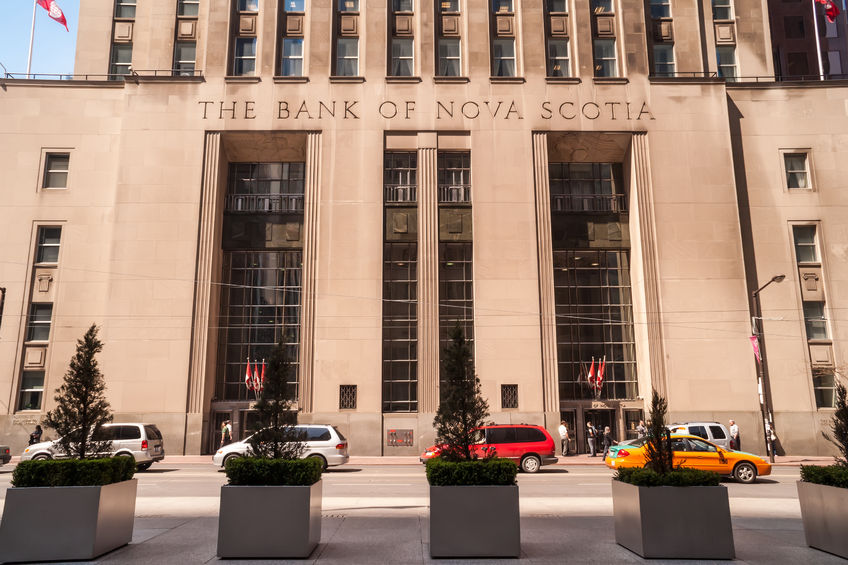
Scotiabank says it has reached an agreement to buy ING Bank of Canada from Netherlands-based parent ING Group for $3.13 billion in cash.
Scotiabank says the deal will add to its earnings within the first year. ING would continue to operate separately.
ING Groep NV has been struggling to keep its balance sheet healthy amid bad loans and declining margins.
The deal, announced after markets closed Wednesday, is expected to result in a net investment by Scotiabank of $1.9 billion, after deducting the excess capital currently at ING Direct.
Scotiabank (TSX:BNS) is also announcing a public offering of 29 million common shares at $52 – for gross proceeds of $1.5 billion – to fund the acquisition.
The deal, which is subject to regulatory approval, is expected to close by this December.
“ING Direct has had proven success in meeting the needs of those Canadians who are not looking for the added services, advice and relationships provided by traditional banking channels,” Rick Waugh, president and CEO of Scotiabank, said in a release.
“We recognize that success and are committed to keeping this unique platform.”
Like many of Europe’s banks, ING has had to divest assets and lean on emergency funds as anxiety over the Greek debt crisis took a toll on confidence in the continent’s financial institutions, which had already been battered by the recession.
The Canadian ING business was established in 1997, attracting customers with its promise of no-fee banking.
They can manage high interest savings and chequing accounts online as well as take out mortgages, or invest in mutual funds – but withdrawals and deposits are done at various ATM locations.
“ING Direct will benefit from the backing of a strong, stable Canadian shareholder with the additional resources to enable it to expand and grow,” said Waugh.
“This in turn will provide our shareholders with a new source of incremental earnings beginning in year one, and a new deposit base to further diversify our funding.”
Said Peter Aceto, CEO of ING Direct, in a conference call on Wednesday: “[The deal] brings strong, stable, Canadian ownership” to the online bank.
In the call, Scotiabank indicated that it had reached an agreement with the Dutch bank to continue to use the ING brand for up to 14 months after the closing of the deal. After that, Scotia intends to continue to brand its acquisition separately from its existing domestic banking operations.
Scotiabank also indicated it would be working with ING management on the possibility of offering new products and services to ING customers, including introducing credit cards.
On Tuesday, Scotiabank reported its profits grew by 57% in the third quarter as several divisions improved performance and the bank also benefited from the sale of its headquarters in Toronto.
Net income for the period was $2.05 billion, or $1.69 per share, up from $1.3 billion, or $1.10 per share, a year ago.
Scotiabank’s Core EPS, a measurement the bank says best compares with analyst predictions, was $1.22 per share. A survey by Thomson Reuters had shown analysts, on average, expected earnings of $1.19 per share.
Revenue increased to $5.51 billion from $4.3 billion.
The bank said the results also included an after-tax gain of $614 million from the sale of its headquarters, Scotia Plaza, a 68-storey tower near the corner of King and Bay streets.
In its performance breakdown, the bank said its Canadian operations saw profits rise to $521 million from $426 million.
In February, ING sold ING Direct in the U.S. to Capital One for €489 million (US$600 million).
In 2010, ING Group unloaded 400 Canadian industrial properties at a $1.3-billion discount to Alberta Investment Management Corp. and KingSett Capital after the European financial giant saw the portfolio’s value crash since it was acquired four years ago.
With files from Rudy Mezzetta